Top five historically engaging locations you must visit in South-East Asia
[dropcap]A[/dropcap]fter having explored the whole of South-East Asia whilst studying a history degree, I felt it necessary to share the top locations I found the most engaging along my travels. I hope you can see why I have picked the locations I did and I urge you to venture out and see them for yourselves. In addition to the ones listed, I would recommend watching the ancient ballet at the Prambanan temples in Indonesia, exploring the National museum of the Filipino people in Manila and gaping at the beauty of Ha Long Bay in Vietnam.
1. Killing Fields/ S-21 Prison, Phnom Penh, Cambodia.
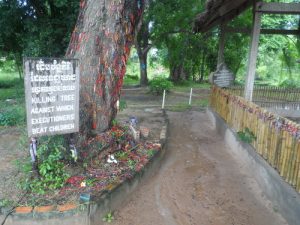
The sign reads ‘Killing tree against which executioners beat children’, a mass grave is then located next to it where one hundred babies’ bodies were found from where they were tossed into the pit after being killed
Shamefully I was unaware of the terrible atrocities that unfolded under the Khmer Rouge regime in Cambodia in 1975. I have been even more shocked to since learn that every time I bring it up in seminars, nor have half of the class. One quarter of the Cambodian population was killed in the space of a year. Since the event is still so fresh, new pieces are uncovered every day and walking round the Killing Fields you can see emerging pieces of clothing through the mud, bringing home how real the whole event was. Likewise, Pol Pot’s systematic process of execution involved taking photos of every person that was to be sent to the Killing Fields. Therefore, the former S-21 Prison is now lined with photographs of every person that was executed under his regime. The Killing Fields and S-21 Prison will undoubtedly break your heart and it is a very tough and emotional day out. However, it is truly moving to see how Cambodia has progressed in such a short space of time.
2. Ayutthaya City, Thailand.
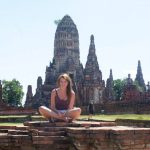 Ayutthaya was previously the capital of Thailand before the Burmese invaded and burnt down most of the city thus forcing them to relocate to Bangkok. The temples that remain in the small city are truly breath-taking. I would, however, advise you to research the temples before you venture out to see them as there is a serious lack of information boards due to the fact that, despite its beauty, Ayutthaya is unfortunately missed by most of those doing the classic Thailand loop. In a way though, this contrast against the overwhelming popularity of sites such as Angkor Wat allows its beauty to radiate far more. My friend and I were alone in most of the temples allowing you to fully explore them without worrying about whose photograph you were stepping into next.
Ayutthaya was previously the capital of Thailand before the Burmese invaded and burnt down most of the city thus forcing them to relocate to Bangkok. The temples that remain in the small city are truly breath-taking. I would, however, advise you to research the temples before you venture out to see them as there is a serious lack of information boards due to the fact that, despite its beauty, Ayutthaya is unfortunately missed by most of those doing the classic Thailand loop. In a way though, this contrast against the overwhelming popularity of sites such as Angkor Wat allows its beauty to radiate far more. My friend and I were alone in most of the temples allowing you to fully explore them without worrying about whose photograph you were stepping into next.
Built between the 11th and 13th centuries, with over 4,000 Buddhist temples erected here, and with over 2,000 remaining, Bagan has more history than you have the ability to cover in a lifetime, let alone one day. If you are lucky and the weather is in your favour then you must head to Shwesandaw temple to watch the sunset over the ruins. Personally I find that the most beautiful part of Bagan is that every person can have his or her own temple. I was able to bike out and find a temple to claim for myself, sit down with a book on the history of Burma, and picture the triumph that occurred right where I sat.
4. War Remnants Museum & Chu Chi Tunnels, Saigon, Vietnam.
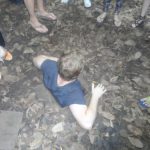 The War Remnants museum, previously named the American War Crimes museum, caused me to well up on every floor. Very graphic photographs are displayed of the civilians that were killed along with stories of those who witnessed the crimes. The most moving section was one that showed the effects of the US chemical Agent Orange, a herbicide and defoliant used as part of Operation Ranch Hand. Again, graphic photographs show the deformities that have occurred as a result and those screaming for help after the attacks took place. The Chu Chi tunnels similarly had me in tears and feeling physically sick. There were around 200km of underground tunnels used by the Vietnamese to hide from the Americans and this location allows you to go down into the tunnels to see how they lived. I found out I don’t do well in small spaces, but these were unbelievably tiny. Not knowing how far the next exit was sent a wave of panic through me. How 20,000 people lived inside these tunnels I’ll never know! Of particular note is the re-structuring of the booby traps used by the Vietcong that resulted in 10 percent of all US deaths. Although it feels as if you are watching the next setting for a SAW movie, you have to pinch yourself to remind yourself that this is real life. Although these locations were of course very biased, the reason I feel they are essential to see is because they really highlight the horrors of warfare.
The War Remnants museum, previously named the American War Crimes museum, caused me to well up on every floor. Very graphic photographs are displayed of the civilians that were killed along with stories of those who witnessed the crimes. The most moving section was one that showed the effects of the US chemical Agent Orange, a herbicide and defoliant used as part of Operation Ranch Hand. Again, graphic photographs show the deformities that have occurred as a result and those screaming for help after the attacks took place. The Chu Chi tunnels similarly had me in tears and feeling physically sick. There were around 200km of underground tunnels used by the Vietnamese to hide from the Americans and this location allows you to go down into the tunnels to see how they lived. I found out I don’t do well in small spaces, but these were unbelievably tiny. Not knowing how far the next exit was sent a wave of panic through me. How 20,000 people lived inside these tunnels I’ll never know! Of particular note is the re-structuring of the booby traps used by the Vietcong that resulted in 10 percent of all US deaths. Although it feels as if you are watching the next setting for a SAW movie, you have to pinch yourself to remind yourself that this is real life. Although these locations were of course very biased, the reason I feel they are essential to see is because they really highlight the horrors of warfare.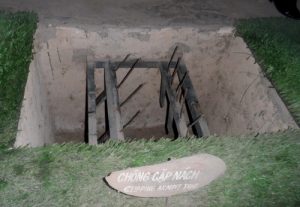
5. Angkor Wat, Siem Reap, Cambodia. (see featured photo)
Built in the 12th century by King Suryavarman, Angkor Wat is a phenomenal temple complex. There is a steep 20 USD entrance fee, and it will set your group back 15 USD for a tuk-tuk driver for the day, but it is worth every penny. Personally, I found the mass crowds somewhat detracted from the beauty at the main temple, Angkor Wat, however by visiting surrounding temples within the complex – such as Bayon temples – it is possible to step back in time and picture the civilisation that reigned there. The place itself is rich with nature too as the trees have grown around some of the temples and wild monkeys climb round the ruins. I’ll confess, my heroic moment of the trip was chasing after and wrestling a monkey who had stolen a lady’s flip-flop!
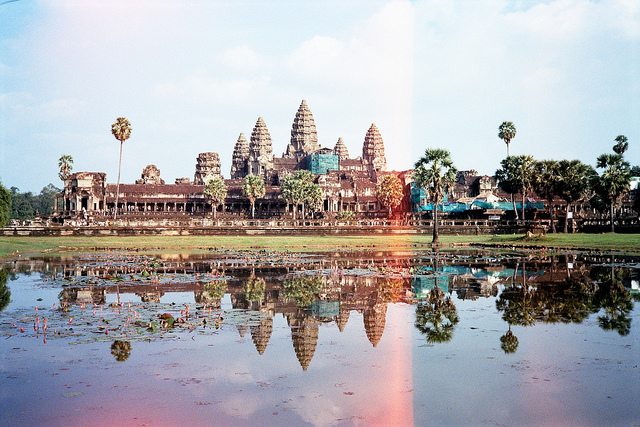
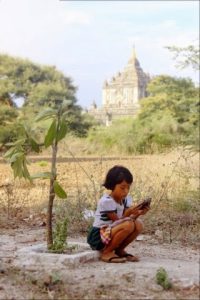
Comments